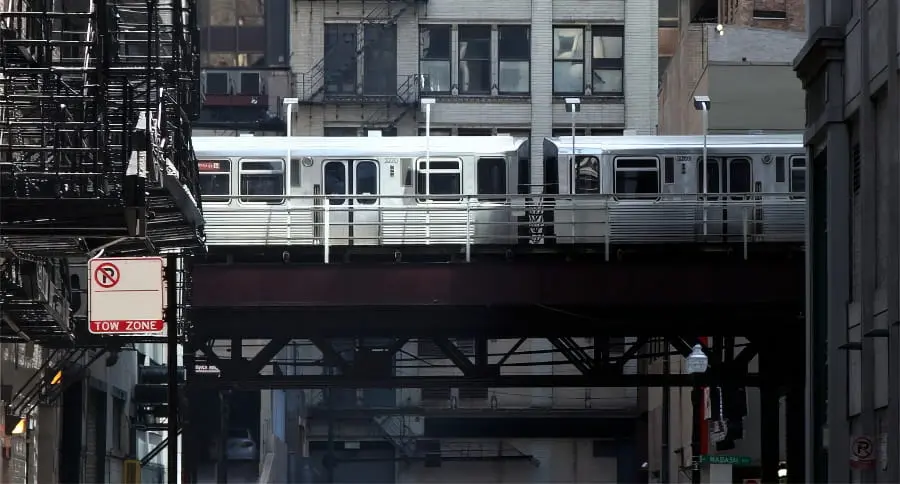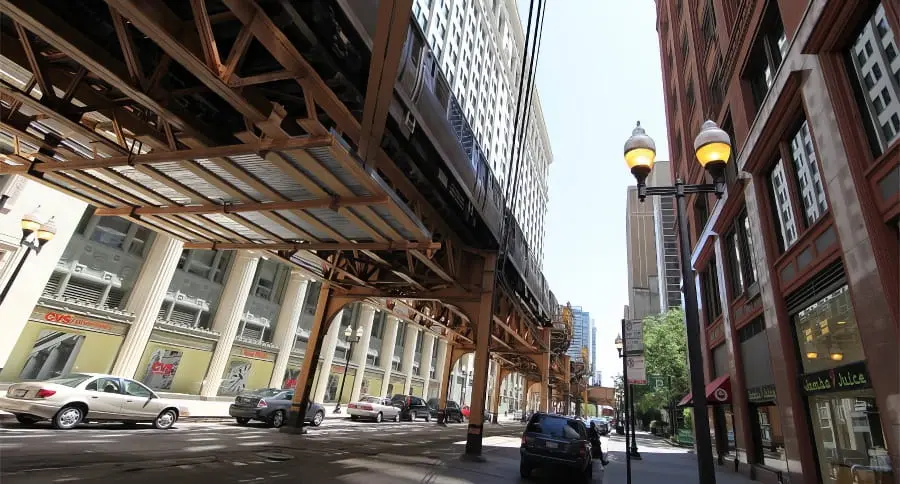The L, Chicago's elevated subway
Chicago's subway system is one of the symbols of the city. In particular, its elevated section, nicknamed the "Elevated Train" or "the L," fascinates tourists from around the world.
But far from the postcards of downtown, the CTA (Chicago Transit Authority) network is first and foremost a vital link to Chicago's suburbs, serving some 40 suburban neighborhoods. The CTA's extensive bus network (1,800 vehicles, 140 routes, 2,200 miles, 12,000 stops) complements the 220 miles of rail lines and 144 subway stations scattered throughout Chicago and its suburbs.

While most of Chicago's subway system is actually underground, most tourists will only see the "elevated" part, which forms a loop around downtown Chicago, the city's tourist hub. We've all seen pictures of this famous "elevated train" crisscrossing the city, shimmering and screeching as tall metal structures jut out here and there, playing hide-and-seek with the skyscrapers. These platforms plunge the streets they span into permanent daylight darkness.

Since 1892, the city has been beating to the rhythmic sound of the CTA's old aerial cars, which still carry more than a million passengers a year. Sometimes threatened, popular pressure has always saved them, affirming the city's attachment to this aging... and terribly noisy symbol!
Several stations house sculptures, paintings, and other contemporary installations in the purest "public art" tradition for which Chicago is famous. Approximately fifty works are on view at over 40 stations.
